Theo Verelst Local Diary Page 42
I've ditched the usual header for the
moment, I think it doesn't help much anyhow.
This page is copyrighted by me, and may be read and transfered by any
means only as a whole and including the references to me. I
guess thats normal.
Sun Nov 4 11:29, 2007
Th
math example
Astrophysics is just a smile on a dog? Nope, not when done right maybe
more the light in a fog idea (thanks to Edie Brickell for the lyrics)
How the hell are we going to know for sure what is out there. We can
see probably only a tiny corner of the Universe of God (or what is it?)
and are already deciding on how it all works, while we don´t even
know exactly for sure where all the deep see creatures come from.
We´ve been to only the closest stellar body ourselves, how would
we know what the rest is all like? I prefer Star Trek ORIGINAL SERIES
over most other views on the subject, and who wouldn´t. In the
words of a fortune
cookie I just saw:
Some
parts of the past must be preserved, and some of the future prevented
at all costs.
Anyhow because I looked at the princeton astrophysics departments pages
I thought about the subject and I did some math which on itself had
nothing to do necessarily with astronomy, more like that I was playing
around with maxima, and in fact wxMaxima, which is currently available
both for linux and windows XP and has formulas in prettyprint in
realtime.
plot2d([1/(1+x^3),
integrate(1/(1+x^3),x)],[x,-2,10],[y,-10,10]);
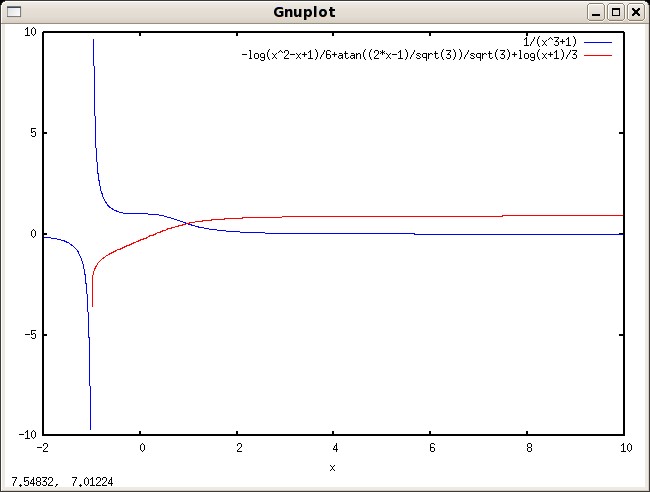
Graphs of the 1/(1+x^3)
mathematical function and of it's formal integral (for x>-1).
To compute the Taylor expression till the hundredth degree,
reformulating the result to a rectangular form (using a+b.i instead of
A exp(i.phi), needed for the constant term), the taylor command is used:
rectform(taylor(-log(x^2-x+1)/6+atan((2*x-1)/sqrt(3))/sqrt(3)+log(x+1)/3,
x, 0, 100));
gives:

A neat repeating Taylor pattern appearently, though of course this is
no proof of infinite repetition, maybe Maxima could be programmed with
a proof method for that, though I am not sure that is easy or even
possibly in general. Lets subtract the formal solution of the integral
(with the integrate command that is made very easy for us, it´s
on the Maxima example page) as to compute the error of the Taylor
expansion of the integral compared to the integral itself:
integrate(1/(1+x^3),x)-(-x^100/100+x^97/97-x^94/94+x^91/91-x^88/88+x^85/85-x^82/82
+x^79/79-x^76/76+x^73/73-x^70/70+x^67/67-x^64/64+x^61/61-x^58/58+x^55/55-x^52/52+x^49/49
-x^46/46+x^43/43-x^40/40+x^37/37-x^34/34+x^31/31-x^28/28+x^25/25-x^22/22+x^19/19-x^16/16
+x^13/13-x^10/10+x^7/7-x^4/4+x-%pi/(6*sqrt(3)));
gives:

Now we can show a graph which plots the absolute error, after setting
the function f(x) to the real integral, and the function ft100(x) to
the taylor expansion of the same:
plot2d(f(x)-ft100(x),[x,-0.9,.9]);
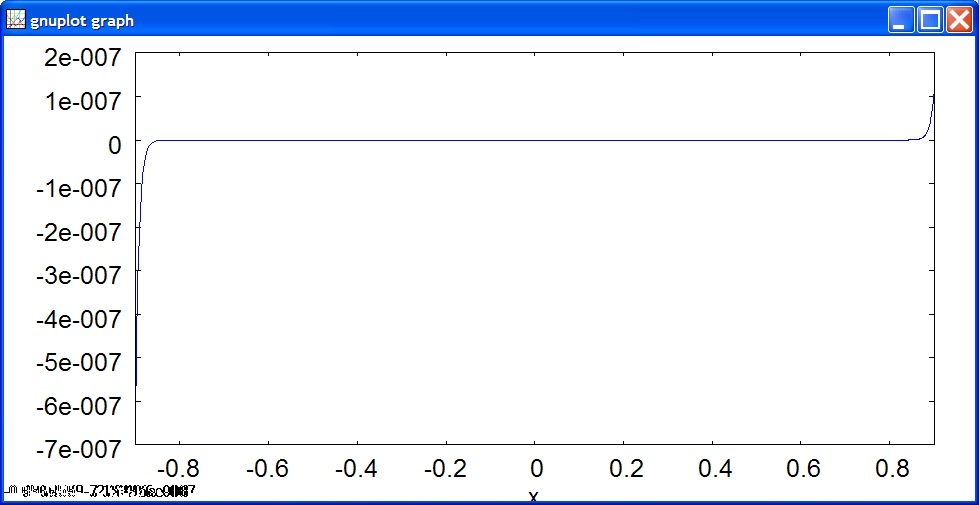
The result of
subtracting the taylor approximation from the actual integral, so the
error.
Pretty good around 0, the approximation point, less than a millionth
error up to about plus or minus 0.9 .
For those interested in these mathematical considerations or who'd like
to try for themselves using the open source and free wxMaxima, there
are html recordings of some sessions of mine and maxima readable
session recordings here
(look in /1 or /2).
separation filters
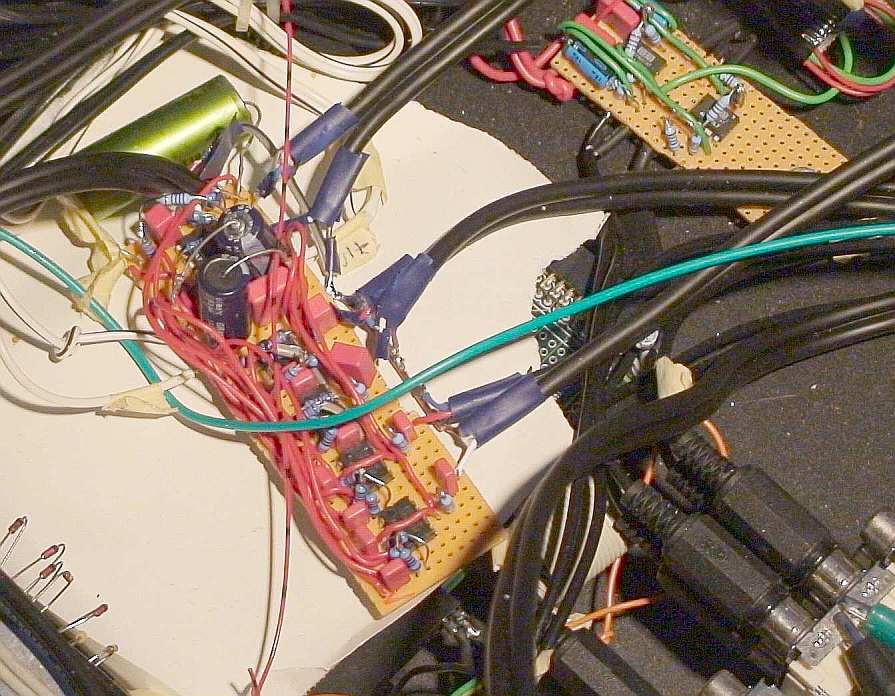
The high quality active
filter bank as a quickly made prototype circuit board with shielded
wire inputs/outputs.
that´s a secret! Not a big one, the general data is known, but
the specifics are not open source at the moment! In essence, the signal
path is straight with only normal opamp amplication/buffering stages
with no capacitors in the feedback loop (no Sallen and Key) and
extremely good parts (TI/Burr Brown OPA627 chips, about $20 a piece)
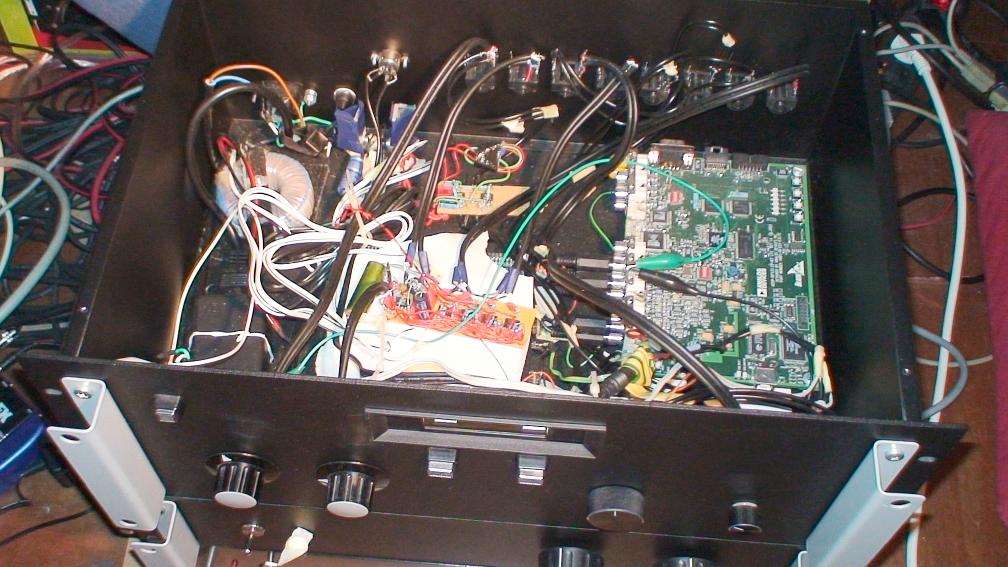
On the left the toroid
transformer, mid top the pre amp chips, mid low the filter, on the back
the isolated jack connectors.
Well, just to tease a bit more and less, the original diagram for the
filters which have for a fast prototype been placed in the sythesizer
enclosure which had suffciently many jack IOs and a well stabelized
supply unit with toroid transformer and the main buffer preamp with
equally good OPA627 opamps already in place:
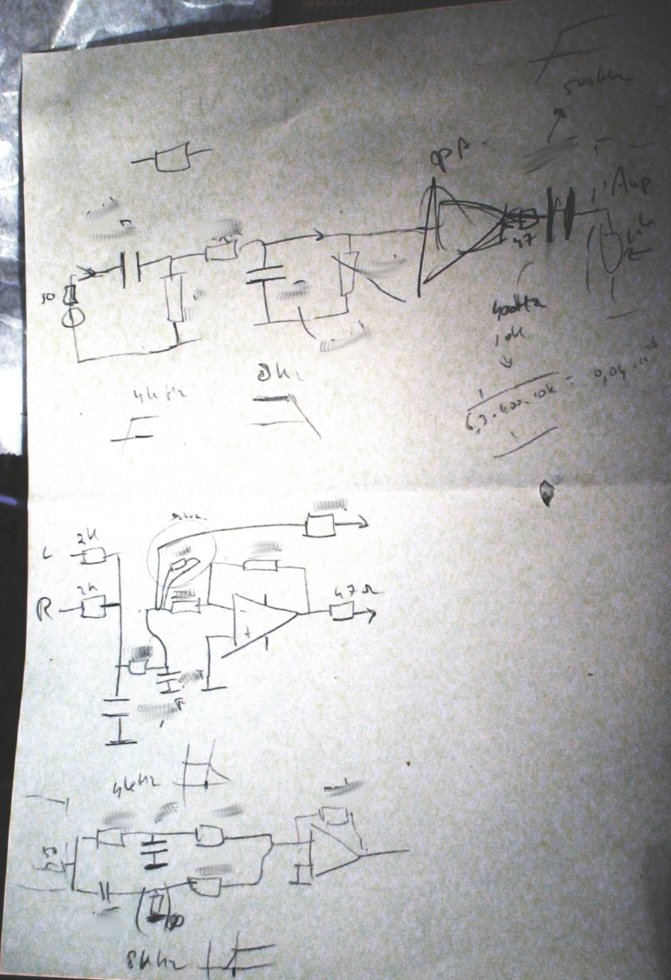
Filter bank design
schemstics with part values wiped.
Clearly, I´ve made the filter component values unreadable.
Remember, the prototype was made in 4 days, including the new double
power amplifier (middle enclosure above) to be used on the MILE 2006
trade show where it all worked brilliantly!
The top filter filters everything outside the 4-8kHz band, with extra
lowcut filtering and buffer before the output to the powe amplifier.
The middle schematic feeds the sub woofer amplifier, which is used in
bridge mode, hence the high quality phase inverter. Its filters are
second order with a high cutoff frequency of 40 Herz, so everything
above 40 Hz is filtered of with 12dB/otave (no typos here fourty Herz low pass, second order). In fact,
there are no seperation
capacitors in this filter signal path to add transients or couse low
roll-offs interfering with the passing of this very low frequency
range, it is all DC coupled!
The bottom filter, also with output buffering of two $20 US imported
Burr Brown / Texas Instuments super audio opamps (inverting the phase,
which is corrected at the speaker output of the main amp) has a dip in
the 4-8 kHz range, while there is a low-cut under 40Hz by use of
coupling capacitors, I think they are not on the schematics, I´ll
need to check the circuit board I made one day to get the actual
circuit and values of that part.
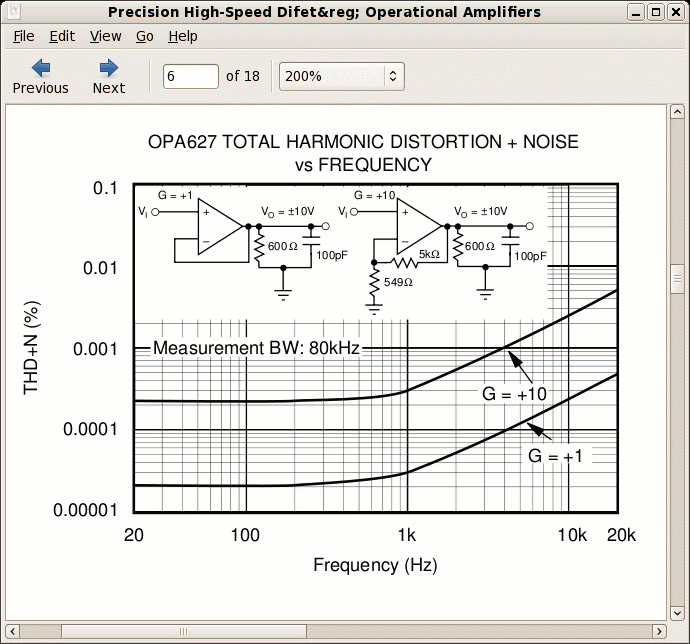
From the OPA627
datasheet.
Very good figures, ad this is a general measurement, not some specially
setup flattered testbench, and mind the amplitude and the loading
impedance for these figures, the GBW product is 16MHz. My loading
impedances apart from controlling the end amplifier input when it would
shortly surge or ground surge, are quite higher, for all frequencies.
The Bible is about music
Because the housers will take over the world ? No, rather the converse.
That´s a daring thesis about the main meanings of the presumably
inspired books of the bible, lets start with the new testament, so that
the history of music and the meaning of it in life would take on the
prime rol it practically often has, as far as I can oversee, especially
in the good times.
Thinkingwise that for me would have to do with the observation that
most buildings in life and it´s existence the last centuries even
are maybe interesting and advanced but never even get close to the real
good music from lets say rock and roll onward, with the top during the
70s, nothing really gets close to the life and it´s wellness that
came (?) from the music and speaks from the music.
I wouldn´t think there is anything at all which compares to the
art and emotional and peoples acceptance magnitude and relevance which
is associated with the time era and it´s ongoings and it´s
richness in music. Of course that is a profound observation, but good
and daring thinking for people who know the time a bit and some of the
music even will in my opinion lead to no other honest answers.
How can it be that 10 seconds of woodstock can change more in human
thinking than two decades of misery? Probably because the Good Music
has to do with the essentials of life and human life and eventually
with the Divine. It would of course depend on what one believes in to
make clear how that is, and what that means, would it means something
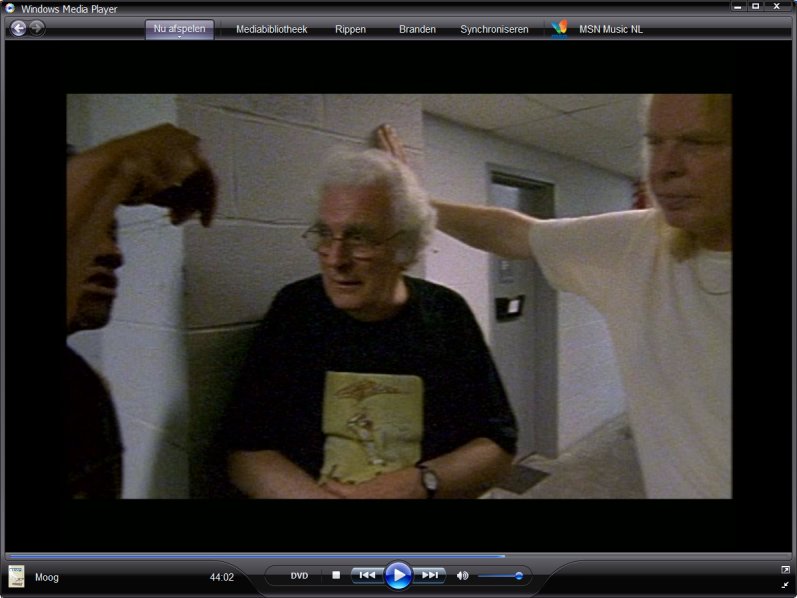
Bob
Moog on
"Moog, a documentary film by Hans Fjellestad" (DVD Plexifilm 18)
"I´ll tell you
where I think it comes from,
I think it comes from
out there, you know, and it comes through me,
into the instrument.
And then the music comes
through you guys in the instrument" ...
What is that, an Amen brother ? No it speaks about where the things
come from which are valueable, which is through stars, in this case one
in electronics (the late Dr. Bob Moog), and one in music (Rick
Wakeman), and it is not unlikely to think about God being somehow in
the picture, especially when it is a profoundly interesting one, which
is probably more like intelligent design than randomness and stupid
rules and some unworthy struggle.
Wakeman: "Moog´s given us an
instrument with an X factor, and if you´re trying to find out
what the X factor is you´re wasting your time, just be thankfull
it´s there!"
Well, it seems reasonable looking at the roots and ongoings in bigtime
historical music like the ancient Jews (See book of psalms of David for
instance), the greeks (names of notes and scale and chord mathematics),
and the christians, especially from the renaissance onward (dass
woltempiertes klavier, Bach) including the great hymns and mainly
protestant progessions in music including orchestras and more recent
piano and of course the whole of amplified and recorded music that
regardless of an X factor music has developed quite a bit.
Server failure
I had that once recently, when I´d used old Fedora Core 4 library
files with Cinelerra to work on FC6 and had filled the whole main
memory with either HD video or had loaded the machine completely with a
complex multiband audio decompression processing problem to run in real
time as root process, and the machine became too slow and then I also
changed the monitor to a projector (connected over DVI), I reset the
machine when something had gone wrong, and then probably while the
kernel was still booting, I reset again. Major oops, the kernel
didn´t start up anymore!!!
So I first reset again (alt control delete don´t work) and
selected Fedora Core 6 / 64 to boot up using the grub menu, and luckily
that worked fine, no problems, no major user files gone, no problems
with the external discs, every started up normal.
That allowed me to asses what had happened, by trying the faulty F7
again I saw there was a lib file missing according to the kernel
startup message. Because by and large the file system seemed fairly
intact, which I could easily check on FC6 by mounting the F7 partition,
I hoped the damage would be repairable, so I ran extfsck to check it
out, and foudn out major messes here and there, but as it seemed only
with files related to certain kernel activity, a number of system
library files, some configation files, even one of the passwd files...
Well, that was annoying, I could of course run 6 again, and adjusted
the grub auto startup accordingly, but I have these new Ingenuity and
other synthesis tools to work with, which wouldn´t work good on 6
(even though I compiled them there) and I had a lot of things set up to
work, from mpeg2 TV watching to all kinds of packages.
Not knowing what better to come with, I though I´d try to asses
what went wrong if I could, and restore the missing files somehow. So I
ran ext3fsck (or is that ext2fsck ?) to correct the file system, and I
hope maybe to restore files from the journal or so, but it only threw
away some 30 files because they were corrupted, and succesfully
corrected the directory structure without loosing major parts of the
file hierarchy, but those system files were gone, maybe because they
were open during unjournalled kernel startup and a glitch occurred, I
don´t know, I NEVER have had any file problem on the system or
another recent linux system before.
Linux Fsck had made a list of nodes with associated file names which
were corrupted and missing, so I just though I´d get the files
anew, in this case by going into the fedora mirrors and get them in rpm
form from it, and hand extracting and replacing the right file from the
archive to the proper disk location, finding out which rpms I´d
need by name association, or often through google...
Installation files I could luckily copy from FC6 as far as they were
affected, and so ofter a half a day work or so I could try to start the
F7 system up again, and voila! With some more tweeks and edits the
whole system was running again, and is still now, as it seems without
error thus far, and is currently holding this file and runs the server
used to bring it to the world!
The server has run for, what is it, years already, 24/7 ALL the time,
even with the same harddisk (being a nice 33 degrees Celcius), first
with FC5, then 6, now 7 (with an 8 kernel I think), without ANY error,
and of course there was a direct reason things went wrong, maybe the
cable exchange create an electrical hickup, I don´t know.
mini powered speakers
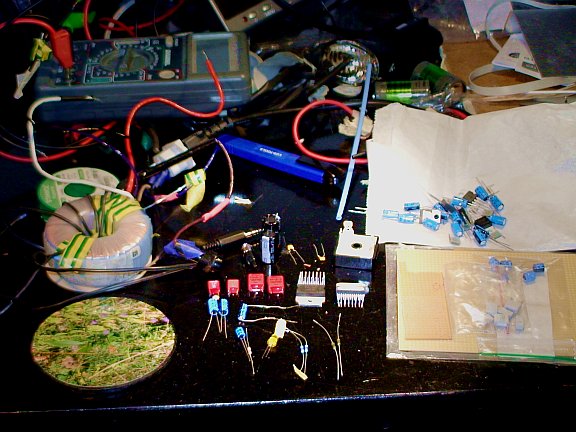
Parts and some tools
for the powered small stereo speakers.
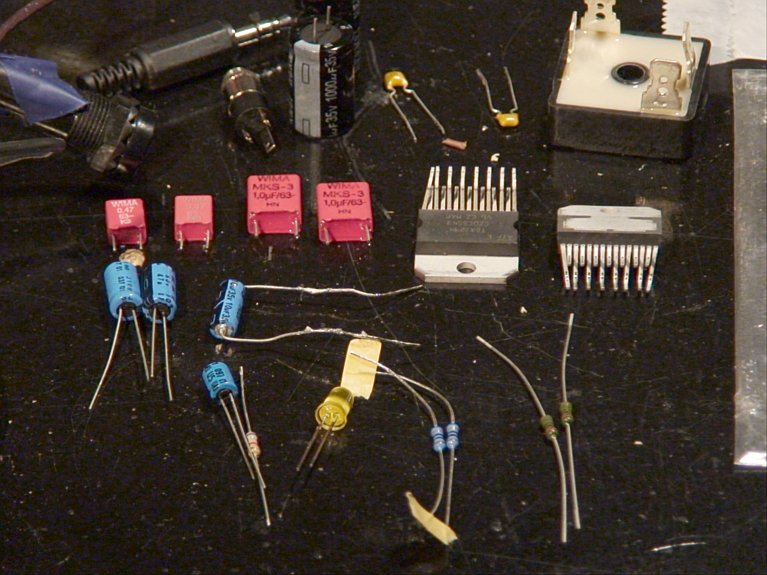
A bit more neatly
arranged the parts could look like a good-part kit (most, not all parts).
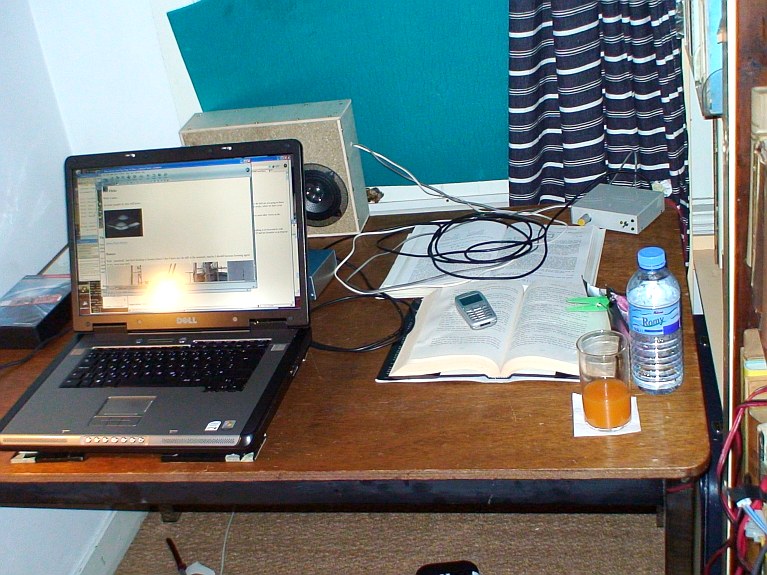
Testing the to be
powered portable stereo box by watching TV with them, and playing music.
Mixer remote control
No, really, I mean it, I want a small unit, maybe I´ll craft
another one like this
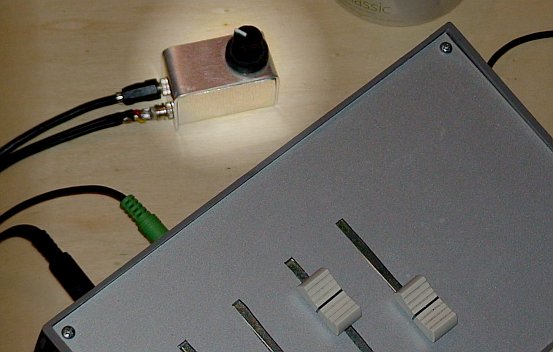
The little volume
control that because it is passive doesn't really distort, and the tek
based passive mixer.
from aluminium, but bigger, with some knobs or faders, and with some
form of display on it, probably rechargable, or as prototype some
simple equivalent setup, and it will connect to the ethernet connected,
Linux running ANALOG signal path audio mixer to remotely change the
volumes of channels, from a good chair or a bench or anywhere in a
place.
The first requirement after having the extremely high quality mixer
prototype is a wireless link which is up to some standard of
connectivity goodness, in this case I plan to further use the parts
from this TI development kit:
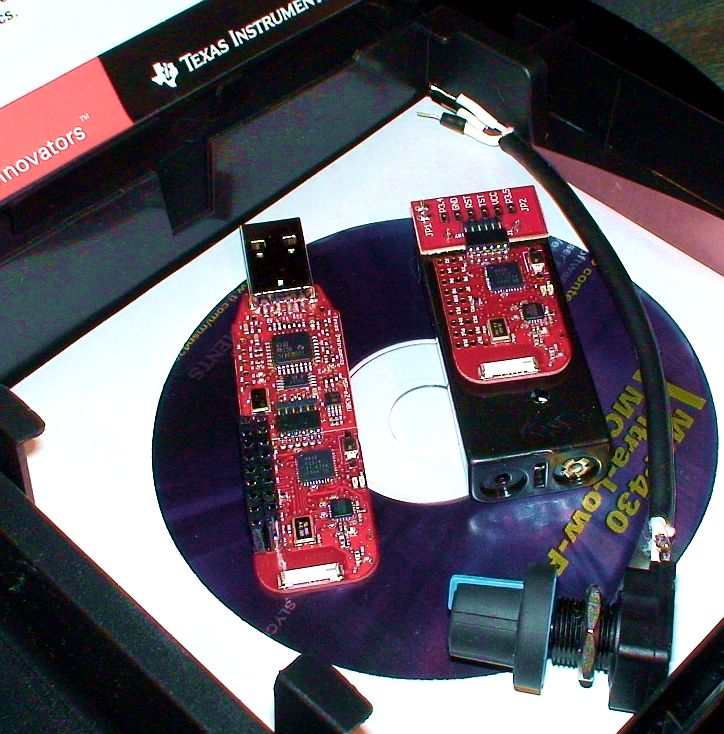
The Texas Instruments
wireless microcontroller devkit with a testpot.
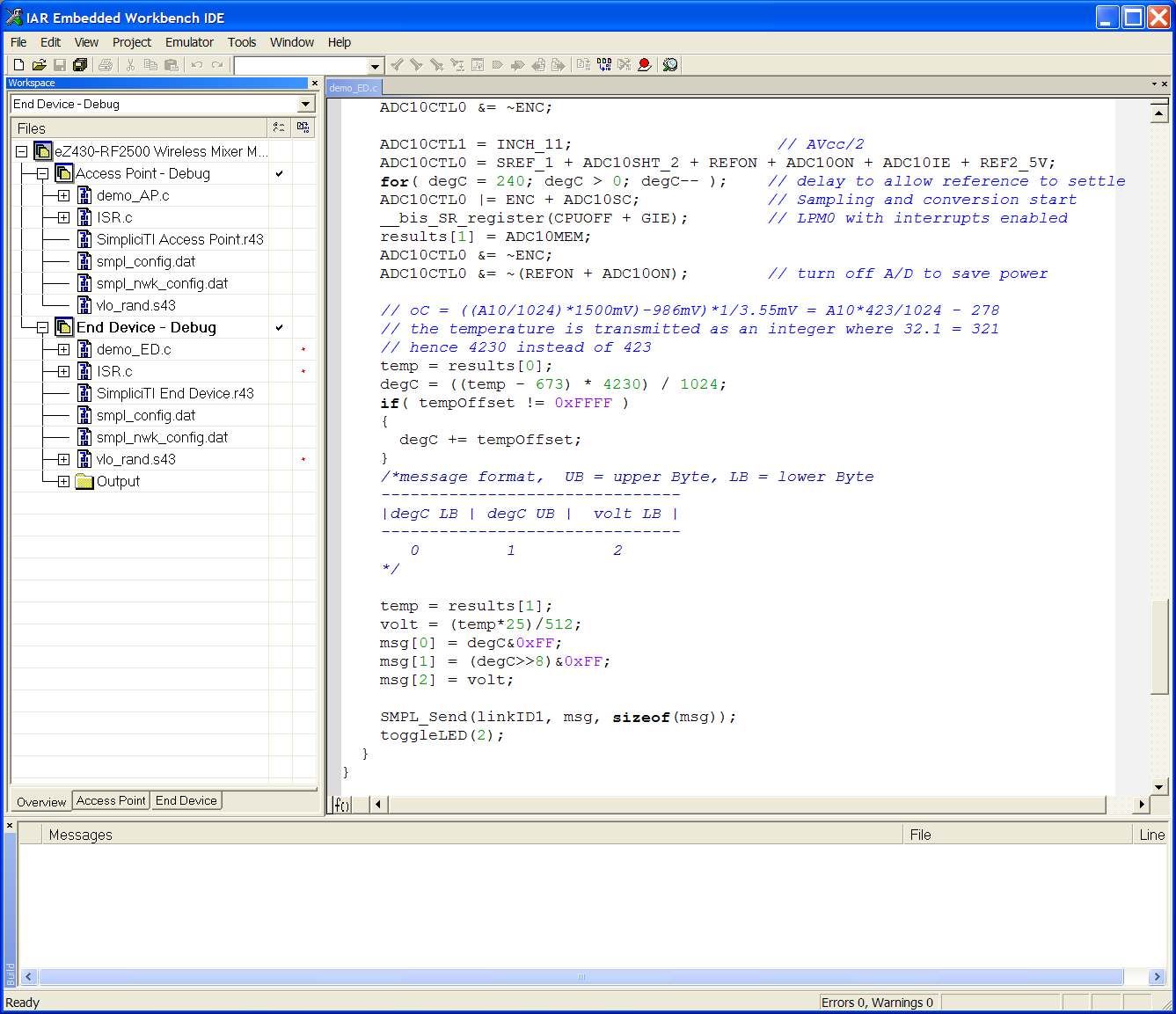
The
editor/compiler/loader/debuger environment for the microcontrollers,
which works fast and good and reliable.
The mixer is progressing to contain these types of channel electronics
and circuit board layout, where the gold plated connectors (a bit like
in model aircrafts) can be rewired according to the desires of the
mixer unit user:
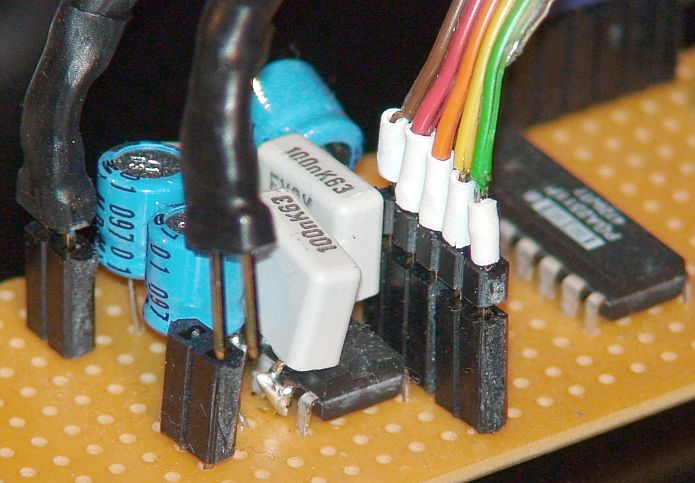
A strip with 8 mixer
(4x2) channels with patchable connections in buildup, one stereo
channel is finished.
the front left two connectors are the left and right input for one
stereo mixer channel. Mind that the TI/Burr Brown chips being used will
be individualy supply ripple suppressed, have a very strong ground
connection in between, will be seperately shielded from the digital
electronics (FPGA, LED dot display and FOX linux board) inside the
single unit high 19 inch rack mount enclosure, and are in this part of
the prototype made of (expensive, but I received these free
samples in the past) A-grade components, which have even lower
distortion than the already world top class volume control chips
normally have.
Also, the supply well stabalized and comes from a toroid
transformer only, meaning the analog electronics are not connected or
ground disturbed by a switched supply and cannot pick up EM
interference from it, and further analog amplification will come from
the worlds´ best audio opamps, the OPA 627, which has been very
successfully applied in the active analog multi amplification
setup refered to above, which is also expensive (well, about $20 per
channel), but at least it was easy to quickly get it from Newark in One
(New Jersey) over UPS or so internet order. It is a crying shame that
importing these precious parts into europe costs extra money, I
don´t know what the hell the justification for that could really
be.
Some time ago I made this animated gif from the prototype mixer
enclosure:
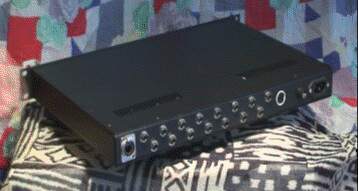
The
mixer enclosure with all electronics in a single height 19* rackunit
At the moment this has one stereo channel with supply under the control
of a Spartan 3 fpga with one SPI bus output I made with it, which is
also driving the display (not finished, but all elements light up) over
a Coolrunner-2 CPLD, and received commands from a FOX Linux board over
a 10 kilobytes per second (about) serial connection, and shows the
current mixer (single channel) volume setting on its own 7 segment
displays (in HEX), while the FOX board connects over the (left side on
the back) ethernet connector with an ethernet cable to a standard
router (the local network), and runs a tcl script which communicates
with another tcl/tk script somewhere on a random computer on the
network (Windows or Linux alike) and sets the volume via the serial
link with the FPGA (four settings currently). The whole starts up
automatically, and the FOX board has linux and its web server and the
main tcl script running in 5 seconds or so.
San Jose
Never been there.... Well, actually I´ve not even been in the US
myself, phsysically. Really never. I long ago already immigrating if I
could, but that was another story, which everybody I knew at the time
(mainly but not only in Holland) and well, I wanted to work in San
Francisco area for a few years to see how that would be, but
didn´t make it happen.
So, life´s so good now I forgot all about it? Well, I don´t
even have my own income at the moment, so I guess there must be other
reasons to be stuck in the country I was unfortunately born in... I
graduated from technical university (network theory) in ´91 and
at the time really felt like following the example of two alumni of the
very same section where I graduated and work at Hewlett Packard, in Bay
Area, but I didn´t get the references and leads I wanted, so
instead I worked for that section for a number of years after having
been invited there and having been offered a decent engineer salary
(being 25 at the time).
But no America! And I would have loved to go! But anyhow, I was very
influenced by the major american lines in my work and main hobbies like
music and film and if it wouldn´t have been for Audi I probably
should have driven an american car.
I was a kid in the 70´s and remember all to well how positively
influenced I was by All The Good 70s films and tv, and especially the
atmosphere I associate with San Jose.
Dirty Harry (SF) was cool, too, but more advanced, just like the
million doller man and such. I think I never even considered many
things European, though I know an amount of happiness is possible is
Paris or Londen, and some other places, to be actually something
I´d actively want to take part in, as a citizen with
self-originating joy the vivre or so. Really. Not nice to say or to
have to say, but after the 70s were over not many things enjoyable
remained I thought, and in holland of all places aspecially I never
felt many things became me good, before thinking about the very strong
evils which must have gone on even. So "its´s dreadfull I want to
get out" or so ? In a way I found that long ago already as in that the
persuit of happiness was virtually impossible even though I did have
more than enough things going on and was making it more than enough.
And things got nice and better now? Gmpf. Well, hopefully certain evils
like physical abuse and satanism are better in terms of more absent,
also because Theo just wouldn´t go in that and won´t shut
up, so cool, for eveybody else.... Nah, maybe for me too, but no things
are loads more dreadfull than when at least I was doing more than a few
ok things. Because I quit/left just before getting my PhD? Nah, I
didn´t care in that way I just hoped that would get me a good american job....
So hopeless and void? Heavens no, absolutely not void, and even alive
and kicking or so. But the country I was born in can´t claim that
they´re ok leaders or have dealt with me even remotely ok enough
to continue, and would with the right wing conservative, jesuit led,
miserable christian hypocrite motherf*ng party "at the rudder" want to
lead the whole world as if they have a big mouth and facts to support
their leadership enough. Meanwhile every body knows what type of
capital of the world Amsterdam is supposed to be, and around every
other corner there´s a dutroux kind of character, or something.
Devastating.
So I looked up good things and help my fellow human beings? Well sort
of, but not only that of course, first I need to think myself right
like everybody else should, which is hard, but I only stop at a good
level if I can help it, and than bay area, even apart from the obvious
electronics connection seems absolutely great to me. Another guy
graduating in about the same time from my section went more north, to
MegaHard in Seatle and never doubted for a second the value of going
across the ocean, even though his going north was in my opinion quite
exagerated, up till Suasalito would seem just about perfect to live for
me.
So, I´m an engineer, I can make money, right? Well, wrong, go ask
my or your mother or so is probably the problem area, and that I
refused to become a catholic layman and whore for rome and it´s
own a good second reason that that ceased working. Nah, I´m just
not good enough! That´s gotta be it. Hm ego bashing, that´s
been tried for half a dcade long ago already mother, I don´t fall
for that. Probably I´m too good! Perfect! I hear some people say,
than we were right to drive him aside! Arrrggg, that really *is*
holland. Grrrrrr.
Unfortunately, the problems have not been away from the United States,
as I also obseverd when last year I entered a paper for Siggraph (the
world´s most prestigeous computer graphics conference) , where I
was treated so wrong by the reviewers I found it hard to believe, but
I´m sure there are many considerations possible.
Anyhow, I like Campbell soup, audio-visual and other types of products
from the area, and thus far generally the people from the west of the
us very well, so at least I have no problem formulating where I (still,
evidently) would want to go to live, and usually one then needs to
work...
So, so Los Angeles in the picture? Well I happen recently to have
spoken with two people from the area, and of course that is western CA
too, but no, that city has not the same appeal, I must say. Because
that´s the place where the little devils with 3 fold pokers come
from and where all hell may live freely? No. That´s another place.
The following pictures under this heading are NOT mine!
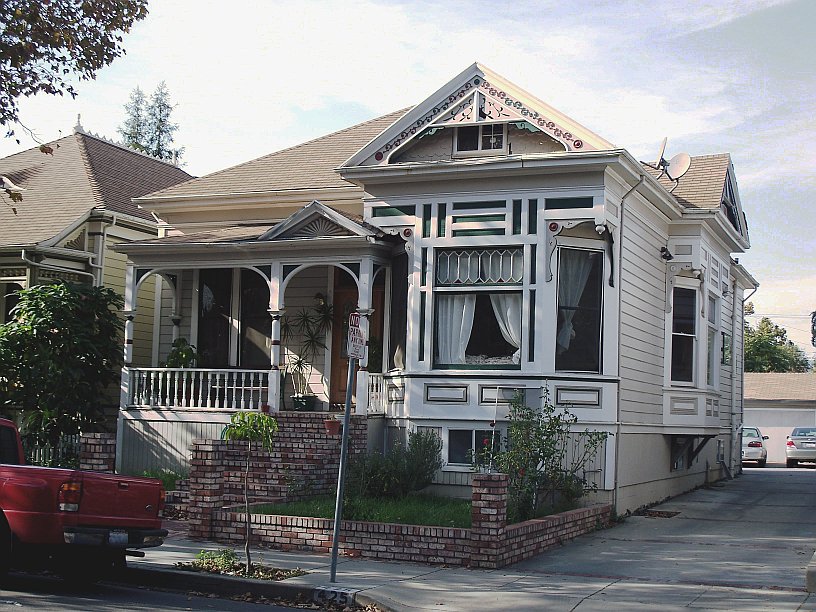
A graet looking San Jase house (image
creative commons licence free from wikipedia)

San Jose, south area.
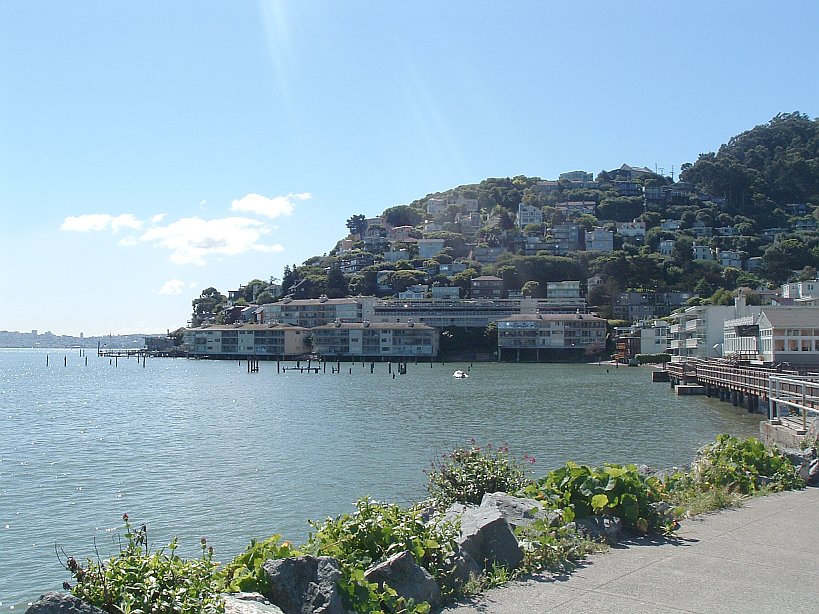
Sausalito.
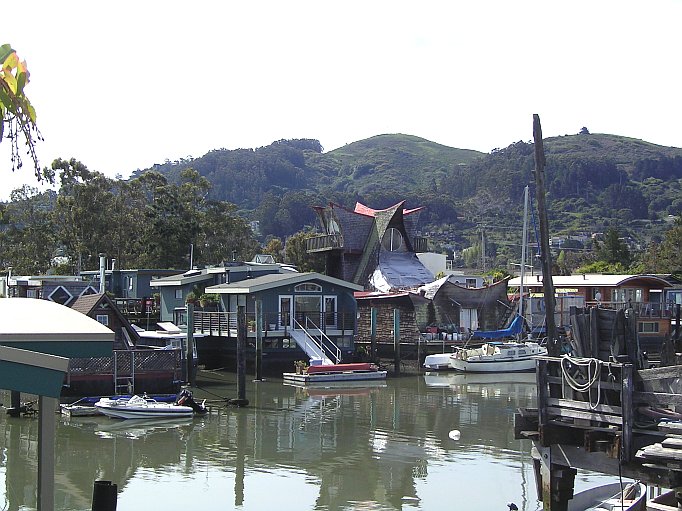
Sausalito.
I got this example from a housing site about San Jose area, which looks
great
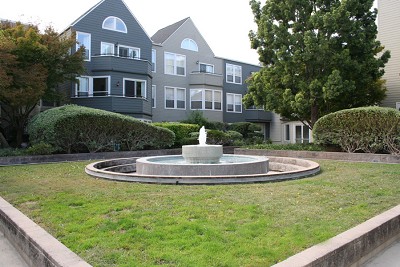
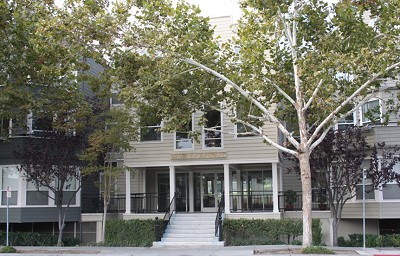

I made the painting unrecognisable, and hope these small examples are
fair use, the point is that I am sure there are people who would like
to suggest I might best like to live in the dutch dryland and really
have no standards I´d like to match up to. Sjeez. I love the
above, looks like being right back in the 70s when the sun shone better
and when the new age wasn´t shining where the sun never would.
I´d feel more at home then I most of the time have felt,
I´m sure.
These are small frames from the student movie competition from I think
Bay area contestants, great little movies, made in a week only:
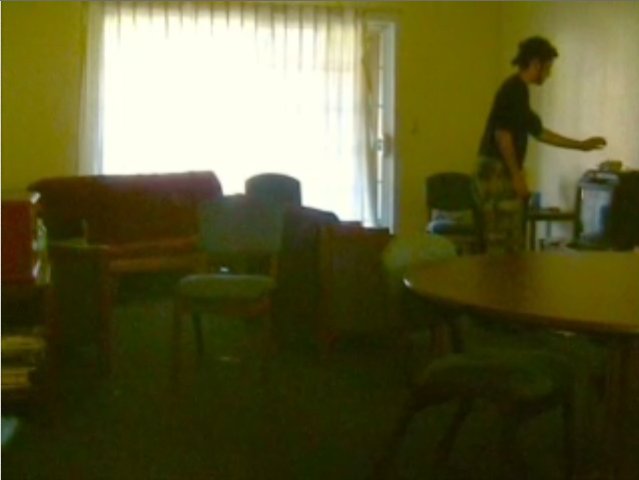
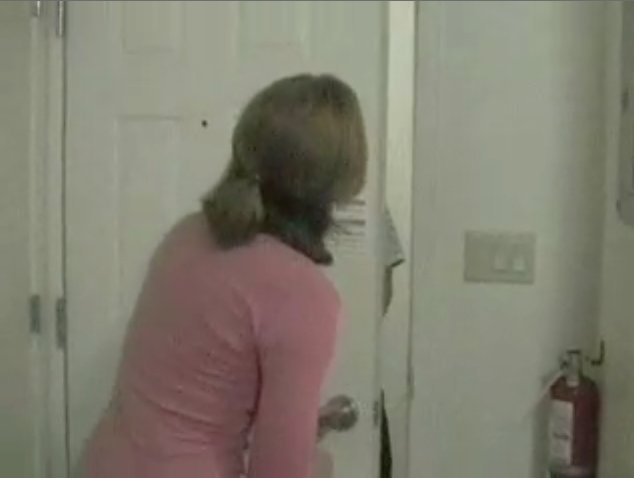
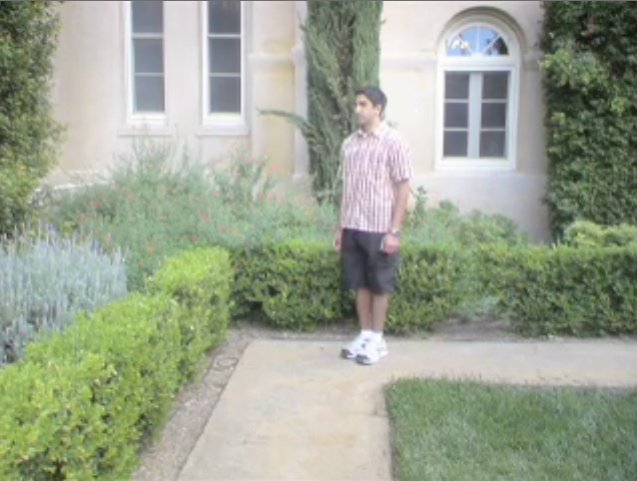
Nice works, with vrying levels of professionality, but it seems all
relevant and not boring.
The New Communicator is out !
Yeah, great. Star Trek in actuality, I vividly remember walking back
from school with other boys and girls like in 72 or so and mimicing
Spock or even Kirk while flapping open a virtual communicator! And now
it is here, sorta.

Well, I did check out the demo model with the chain, without battery so
to speak, and it looks nice and usable, I guess there will be space for
inbetween phone and small notebook size devices, and some complain
already the E90 is too big to handle, but it looks cool. And with all
time on internet on it, it can even dim the lights and control my
mixer! Hopefully the wireless connections are better then I´ve
experienced with some more modest wireless phones, where not working
and strangeness seemed to be almost common situations, and reliability
not exactly all the time.
And I don´t like all those high frequency digital radiation
sources myself very much, so I should not want to use those extreme
internet speeds maybe, and propagat neat connections with good
controlled radiation, but that´s hard, even to communicate.
Before you know it you´d have to tell some guys and girls who
seem to really want to sacrifice themselves to the high frequency
airwaves they can´t even get that.
Anymore electronics, would you?
Sure (sounding like one of the Blues Brothers)! Why, HD is telling you
of course that´s above your level, and those numbers of pixels
and bits per secon just couldn´t work right, of course, all those
speakers and amps (13 speakers, 10 amp channels) you use for surround
sound experience principally can´t be managed right by you a
terabyte cannot possibly be filled by such a dull person, and you know
now modern music just isn´t your thing because that´s soooo
incredibly sophisticated!
Uhr, no. I love to ´film´ and view HD (which is hard), a
beamer can´t be too many pixels and lumens and linearity
(/exponentiality), I´d want even more channels and amplifiers,
though at the moment they don´t need to be louder for my normal
purposes (one cannot and need not put a thousand watts to work in a
normal living room environment), I want more AD/DA converters of top
quality and loads of processing and internet power, and graphics
horsepower and disk space and all such things haven´t even begun
to show their end or the total fullfillment of their possibilities,
even remotely.
So I can easily make an electronics wishlist or menu containing many
interesting and expensive or advanced (or both) machines and machine
parts to honour the more electronics is often beautiful paradigm:
Ultra HD recording, viewing, processing
like 4 times more horizontal and vertical resolution of 1080 HD ....
Cool! I saw that on last years Ibc conference being demonstrated on a
big screen by I think a japanese company. Let that get there where it
is good enough to compete with good (65 mm) analog film! For the
moment, I´ll settle for a big red or equivalent 4k camera,
preferably with good grade lenses to experiment with.
A big set of High speed, low latency AD/DA converters with
connected big and fast programmable FPGA
to do processing for audio effects and synthesis at at least superaudio
CD quality with small latency (to have good live and playing comfort,
see also heading about live digital audio processing). And a good
programming system which at least can compete with a good breadboard.
Some array (..) of 10gigabit connected Q6600 machines with
1.3GHz bus speed and memory to match it, graphics cards like NV8800s or
maybe a variation which can encode a nice HD format with good quality
in hardware, and preferably fitted with a big Virtex-5 connected over
PCI-eXpress, running Fedora 8/64 with running and working nasd
distributed sound server.
An extremely fast electrical car with electronics to
handle! And my own field with solar arrays to charge it!
High speed world wide directed satellite internet with low
radiation and pocket-sized... For the moment a nokia with good (open
source ?) devkit and 24/7 internet looks great (they´re not here
yet, really, but I did hold one, and internet can be bought fairly
cheap per month, at least.
Join Hawking in space or use the american moon base as
science and music office annex space webcam.
Make the quarks give it up both at Cern and in other
particle labs and join the sane and mathematically unchallenged
scientists in the field.
Yellowjackets featuring Mike Stern, ah, this one´s
taken care of! Me doing a fusion (or rock ?) tour in the us, yeah.
Next thing you know I´d have to talk to solar particle beams...
And that they follow the rules of Network Theory, wink wink.
Live digital audio processing
Is that worth a heading, isn´t that what ´everybody´
is doing ? I though about the problem long before that was normal
enough because there are problems associated with the idea, which are
showing up extremely clearly in this time and in modern
´music´ exactly like I thought.
Three main problems are: quantizing the signal sounds bad over the
feedback, even at 24 bit it´s hard to get the whole loop to sound
good, DA converters require reconstruction filters, even at 192kS/s,
which take a quite non-negligable total delay time to perform right (note the italics) it might
even take seconds of delay for a perfectly good filter which treats the
samples right over the whole dynamic range and shows not too many phase
and group delay problems, and hardly this is properly mentioned, and
finally, the processing inthe digital domain also takes some delay, and
when the correct anti-aliasing is included, a lot of work to do right.
And even if the dsp algorithms are considered cool, and the delay is
bearable, then the idea of interacting with the sound could be just as
unreliable as having to start Windows again during a performance, of
course... And often the parameters which are settable are very coursely
quantized, not nearly as accurate as for instance an analog equalizer
or other effect, and the noise and all kinds of processing artifacts
(downsampling gives either aliasing or filter phase problems when the
input bandwidth of the AD is fully used guys, no way around it) which
build up in the digital domain can sound even nastier than common
electronics hiss and hum.
So , no fun to do digital signal processing with Theo? Hah, no, of
course not, I was probably using DSP extensively before a lot of the
new age music population was born! And then I built my own AD and DA
converters and filters and iFFTs and other software, and that was years
before I went to university to enjoy the privilege of after three
retries with a 4, 5 and again a 5 to drop a particular DSP course and
replace it with another course of choice. Man, that sucked, I had
9´s on my endlist, and not for the least courses, I didn´t
need that sh*t.
Anyhow years before that I used a Ibanez DM500 and a Korg Poly 800 with
digital delay extensively and played various types of more or less
digital synthesizers/keyboards, one I built myself even, so no I think
I can make great fun with analog and/or digital signal processing, but
I´m not going to believe in new age hype, no sir, not me. Sorry.
In fact I thougt it was great
to use a very important machine with for the time totally hard and
advanced DSP in it, even at considerable quality: the Yamaha Dx-7 to
which I owned the circuit diagram and service manual and had studied,
also by looking up what a Bessel transform is in radio transmission
theoretical science books in the university library, and that quite
before that particular dreaded university course.
I knew in practice what mixing and FM modulation and envelopes sounded
like on a good monitoring system, and loved it, before I would need to
believe from some pencilpusher that FFTs are the world. I knew that wasn´t the case.
Thrilling science isn´t the target in the lowlands, but the
popular thoughts of normal audio and music people shouldn´t be so
confused as they appear to be on several subjects, especially when
there is no need to consider them my enemies (and of course I know
there are people who in some sense are).
A fft in the signal path can work transparent (but with delay) in
only exactly one instance: a straight fft with enough intermediate
computation bit width followed by a straight ifft (inverse fast fourier
transform), which will within the accuracies incurred by rounding, give
the original samples back.
Everything else has problems or ´hidden´ inaccuracies in
it, unless it is simple or retarded musical material (wink wink). That
has to do with the accurcay of the frequency analysis, the assumption
for a good FFT that the signal is of constance wave shape of which the repetition ratio preferably
should be the same as the fft bucket size, and it is hopeless to
treat anything with noticable transients with an fft.
Problems? Well, first of all most fft frequency picture are hopelessly
shift variant (if you have education in the direction you ought to know
what that theoretically means), and the frequency graphs are either or
both hopelessly slow and/or plenty of harmonics are visible only
because the analysis interval doesn´t or even cannot (for cords)
coincide with a multiple of the base harmonic of the note analysed.
Everybody who sais that isn´t true or is really no problem and
who doesn´t know what speech coding from before (not from) the 80s had to do
with pitch matching is basically full of it too much to take as
authorative. "But Theo, there are professors
..." Yep. Sure. But there are in certain countries and times also
"official" (who get a state salary for that) professors who can be way to full
of IT, believe me. Read some good theory books, preferably (if
you´re like really
good) go over the actual (proof) mathematics of the fourier transform,
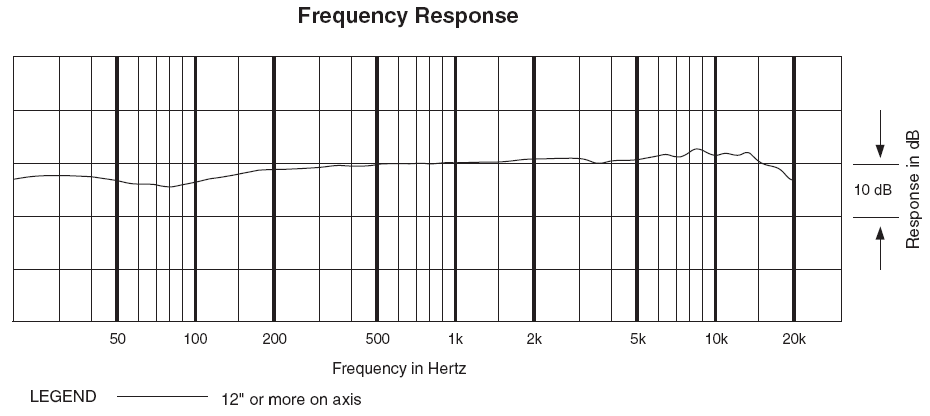
The American Audio Technica AT2020
microphone's specified frequency response graph.
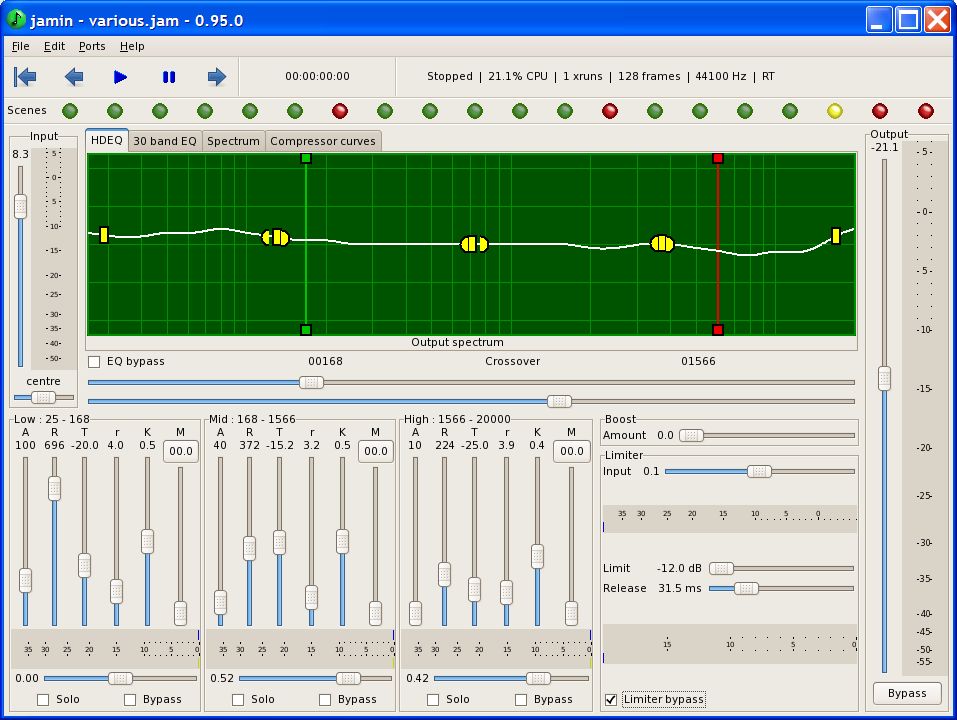
Compensation of the a
AT2020 frequency response with Yamin's 1024-piece equalizer (mirror of
the above).
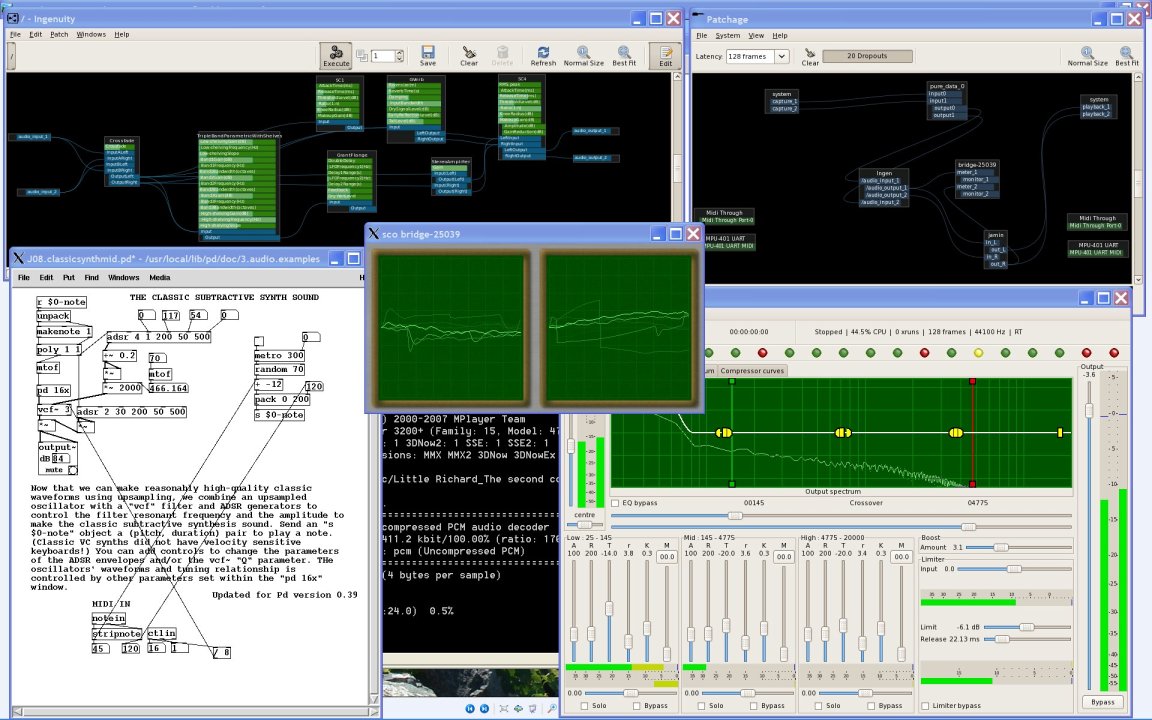
Patchage and Ingenuity,
PureData, Yamin, and meterbridges' oscilloscope.
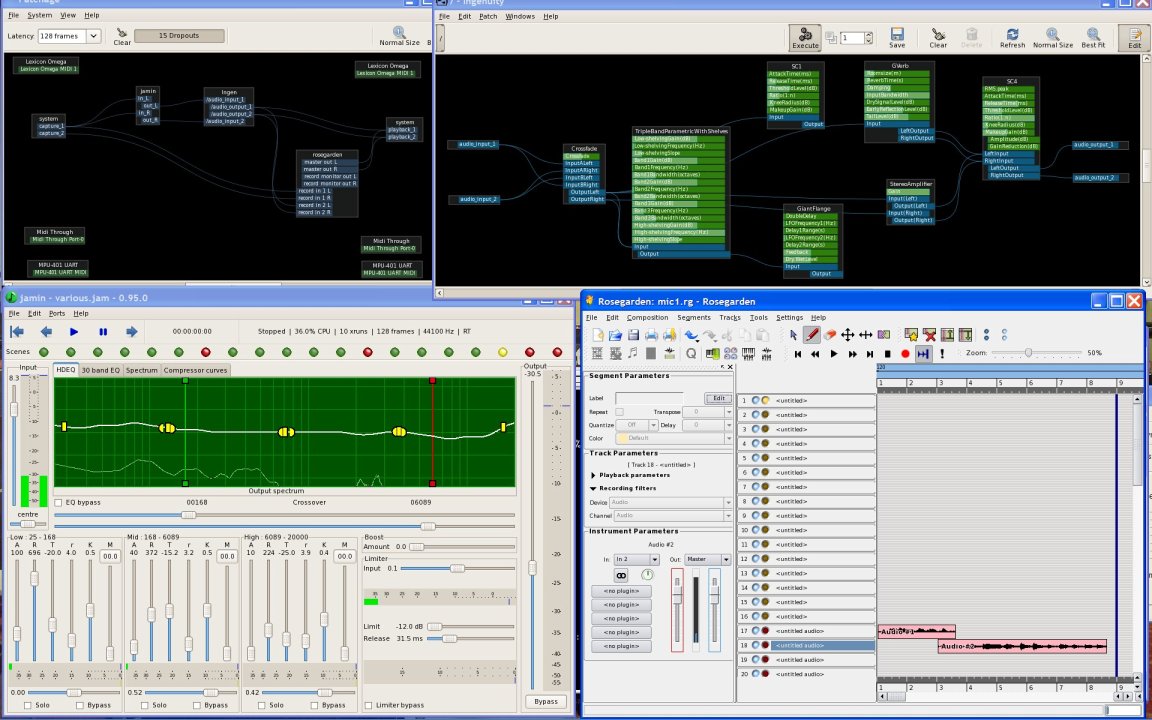
The input of the
Lexicon Usb AD/DA converter is fed to rosegarden to record, and to
Yamin and Ingenuity for effects.
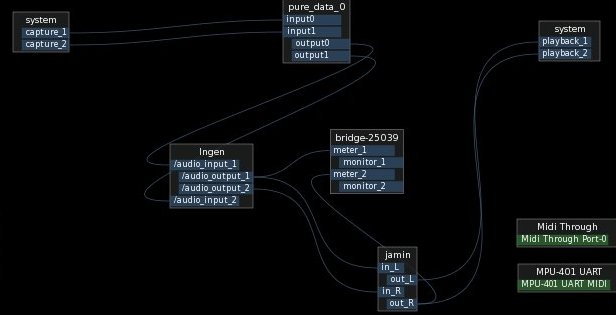
A three long signal
processing graph between input and output.
Siggraph a year later
Well, is it dead? It seems not, but it sure is exposing to see some of
the materials, which I did during a free viewing period of the website
for seeing recorded lectures in medium small, fairly good quality
streams using quicktime
Honesty sais I used mplayer instead mostly because then I could neatly
view in Ful Screen mode, which is quite good, especially when the
materials have progressive information in them on HD screen.
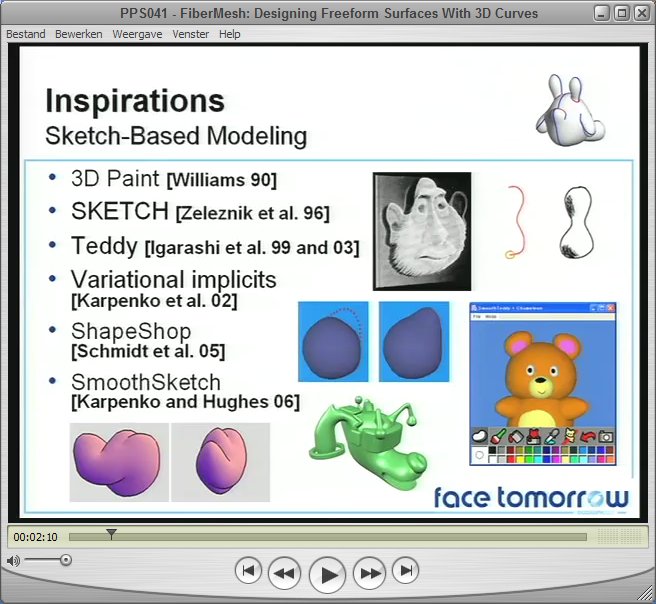
Siggraph 2007 lecture
about fibermesh three dimensional shape editing.
An example is shown above of a presentation I viewed, and I downloaded
the software from the site too, to make some 3D deformation surfaces
with bezier surfaces, which is fun.
This is a Gelato rendering of a blob I made with the java program:
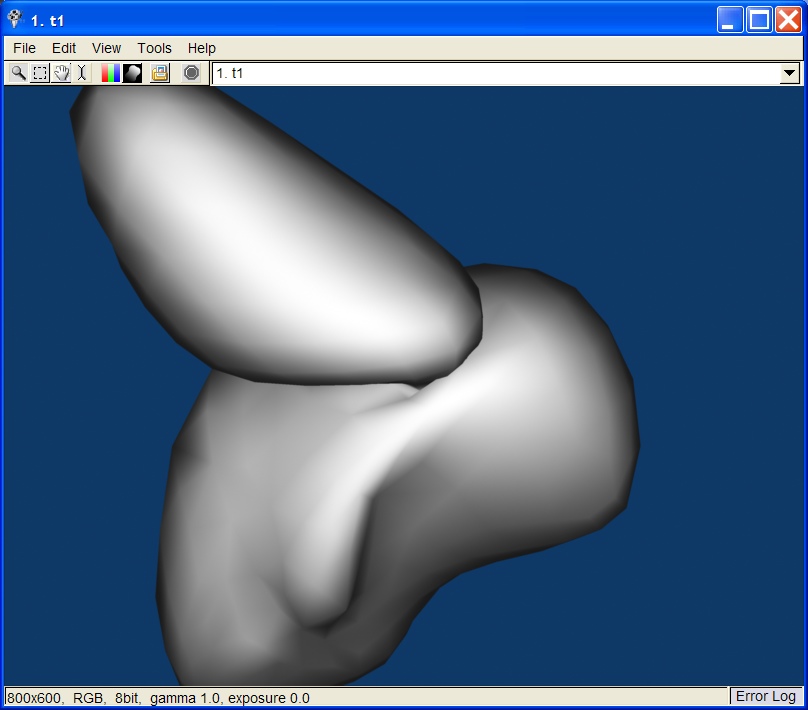
A 3D claylike figure I
designed with the above program, and rendered in high quality Gelato.
Gelato can render NURB surfaces, but clearly the edges and surface
accuracies obtained by going through Blender (to read the obj file and
create a .pyg model file) are very far from acceptable for high quality
image rendering.
So how can I watch the interner movie materials most properly, ha,
well, pretty cool:
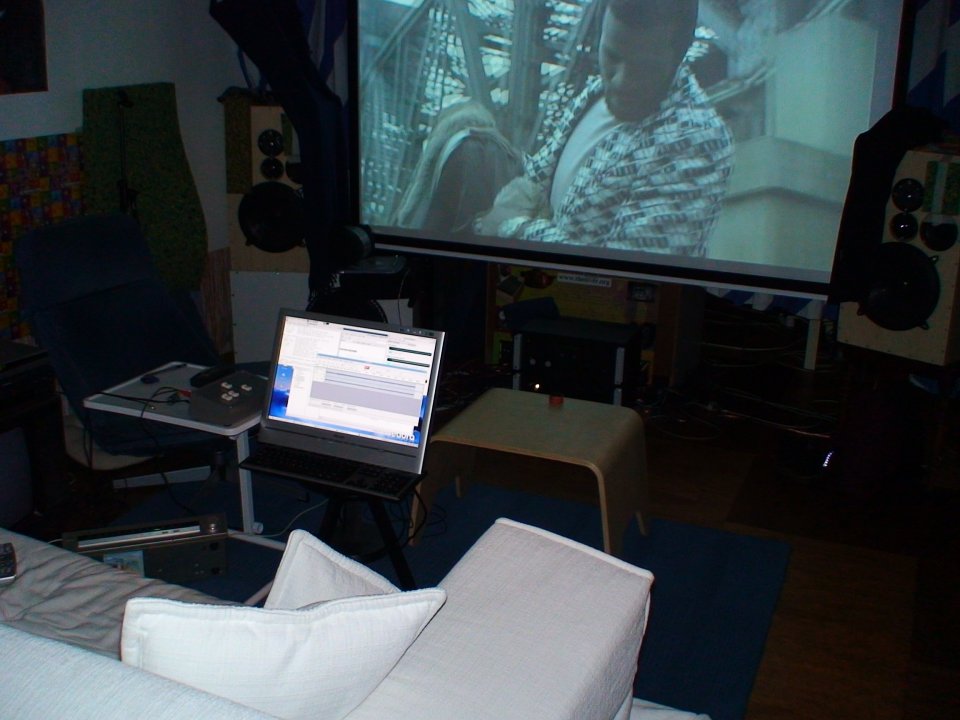
A digital cable channel
on screen (2.3 meter effectively wide), and the remote server screen in
front of the Ikea piece.
The server is meters behind the screen and therefore quiet, the screen
is connected through one of two DVI extension cables of 5 meters, which
is great, and they can be bought cheap, for instance from conrad, but
you may habe to search for hours to find them. In series works
two, except an older graphics card cannot handle that well, so that
green spots appear on the screen instead of a certain dark colour.
Through the long cable, 10 meter and a DVI to HDMI cable, the projector
can be connected to the server where this page is on, preferably at its
native 720x1280 resolution. A video digitizer box is also connected
with the server over a repeater 5 meter usb cable and then a cable to a
hub and then a cable again (8 meters total) , which produces a mpeg
video stream which can be viewed live on the beamer in full screen,
with full control over mplayer parameters for cropping and stretching
and aspect ratio. The laters mplayer I compiled has been improved to
work pretty good this way, and keeps up with any material on a 720
screen.
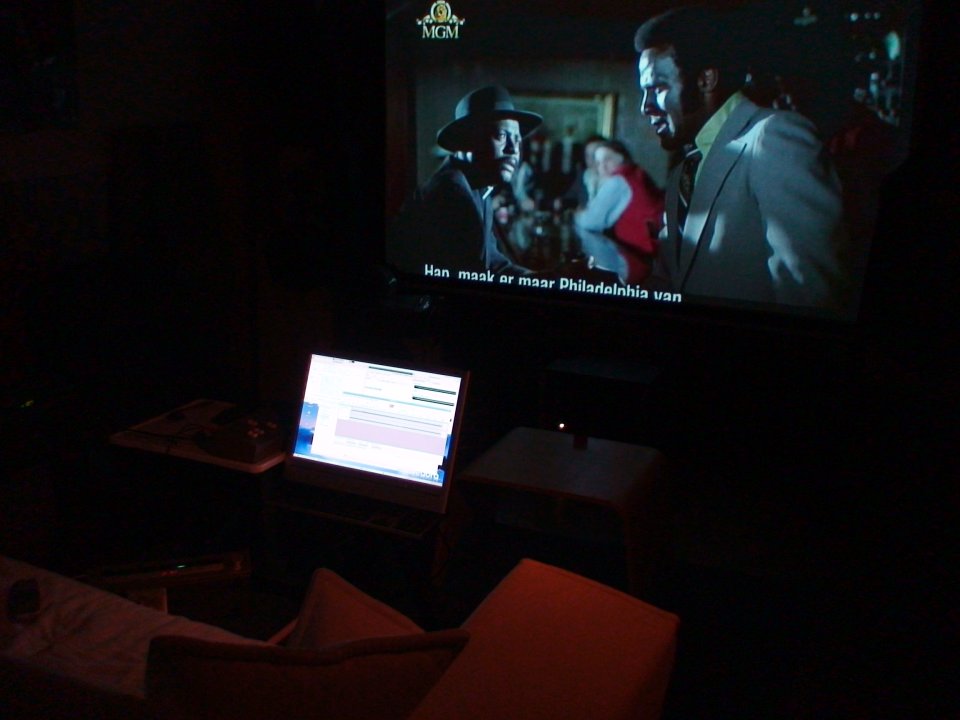
A cable channel on the
beamer, using modest composite connection wire.
How to view my own computer edited video on the beamer? Well preferably
use a machine which has:

in it, meaning it has a Nvidia graphics card newer than the 6200 or so,
and Purevideo(TM) installed, which is a fairly cheap extension which
drives the hardware video renderer in the graphics card to do perfect
mpeg-2 video rendering, even in real HD, with absolutely error free
results, no lines, blocks, stutters, irregularities, nothing but close
to perfection. Of course the material has to be right, and there are
general issues for motion interpolation and such where it is about
choises, like how to deal with the small LCD slowness, or in the case
of the DLP projector, how to interpolate motion to the much faster
responsiveness of the little moving mirrors than the frame rate
requires.
The projector I think from the looks of it does a small range motion
analysis/estimation/correction or maybe 10 or 16 pixels or so, which
picks up motion between frames unless the motion is very fast, than
jumps are normally visible, depending on how the material is made.
There are advanced issues of course, like wether the image is scaled,
and how, and wether there is progresive information in the material,
and wether downscaling is required (my 1080HD must be reduced somewhere
to 720HD).
Color and intensity are important issues: primarily they should be as
close to the original as possible, except when the this is impossible
or undesirable because of lack of dynamic range or for artistic
purposes. The projector I use is known to be one of the most natural
color accurate machines on the market (probably with the exception of
big, expensive cinema projectors) and has been tested as such. I use it
with great pleasure, and probably will even more than now use it as
colour reference.
An how about the light? Well it´s hard to get everything right,
daylight, electrical lights in an energy safe way, and the cinema-like
properties such as good (mainly absent) reflections from the
illuminated screen, a little bit of light to move around and search for
remote controls during film, and preferably a dimmer system which can
be controlled like cinema lights to go off real slow and real smooth.
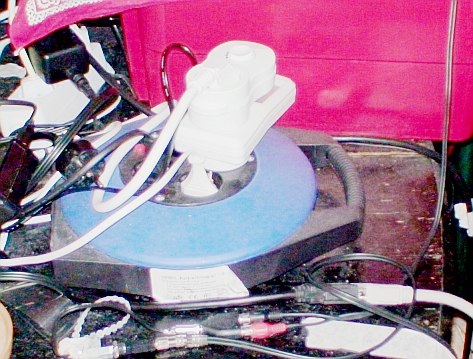
Light dimmer and remote
switch, DVI extension connection, audio adaptor.
Above there is the mains prolognation wire spool which is a thick wire
grounded cord which is connected to an earthed socket, of which I made
the earth connection work myself by hardwiring the ground to a exposed
ground wire (unless it would have been a lightning rod) and where the
current comes from the same source as the audio system. The dimmer on
top is hand controlled but works good, and is mounted on a remote
controlled switch, and drives up to 4 lights, a good quality halogen
big reflector spot (Philips lamp) which is directed at the sound
sweetspot which is of course in the middle a few meters from the
screen, and another halogen spot with electronic transformer (which
buzzes a bit when dimmed) from the other side, and two small halogen
lights in the back with transformers.
I front just visible are a long wire audio connection (for instance for
the analog output of the HD cam, which sounds good) and a up to 10
meter long DVI extension cable, which is connected to the black DVI to
HDMI cable which is in the back of the projector.
 Flickr
Flickr
What a name....
As many people by now will know,
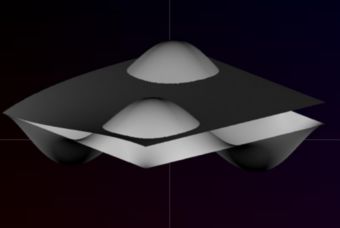
A 3D graphics image
created with software written
by me.
photos from
theover
Houses
Well, ´somebody´ has been looking at houses (since I
don´t have any do still at the moment, maybe I should become
housing agent or so), even near here:
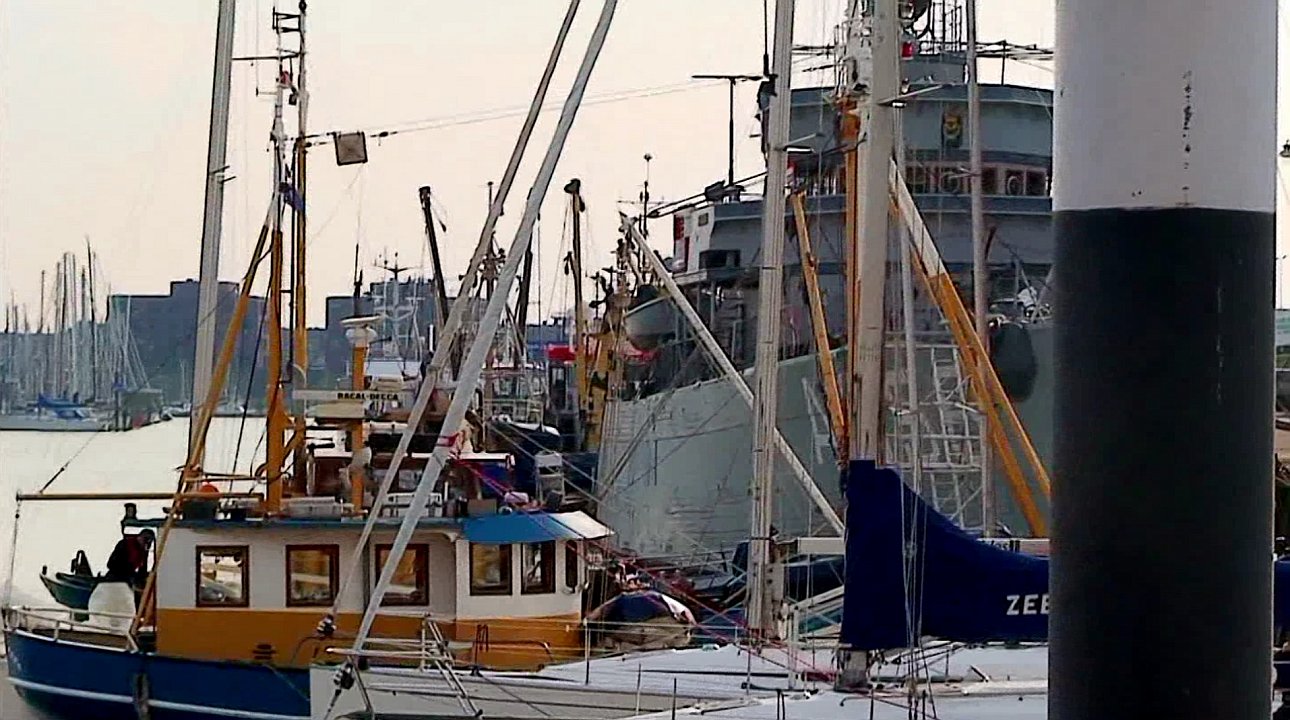
Boats in Scheveningen
harbour (the Hague) in front of a sailing store on seasailor school
open day, processed from HD video.
Though that´s a picture from scheveningen, where some
neighbourhoods felt cool, for instance overlooking the dunes, the
picture is from the harbour from a piece of HD film I processed, which
got to look good. Of course that is a bit of a daring statement that
one´s product looks ´good´, because at least that
depends on what one views it on, and on what the ideas are that are
being communicated.
I wanted a film like effect, which in principle is also about
naturalness I think, meaning close to reality, possibly with emphasises
and embellishments. Also beauty would depend on the subject and the
possiblities of the art form, like the size (number of pixels) of the
picture, and in this case the processed fragment is moving pictures,
film. Movement and using the 1920x1080 picture elements in every 1/25th
of a seconds´ full frame is quite a higher challence than the
above frame of a not so moving part of the film piece, which has been
shrunk to a smaller size because most people aren´t currently
using WUXGA size screens to view this page, inevitably a bit of the
detail is lost, and other pixel roundings take place during resizing,
and some color or intensity accuracy can be gained by averaging in a
good way, and possibly fine noise is less, too. The life which comes
from playing the moving footage properly can hardly be represented in
any picture.
This is another viewed house, where these pictures come from a quick
run through of the place with the HD come, and taking and
hobby-processing a few frames from it:

some space!
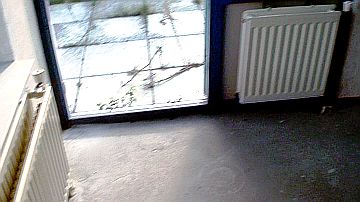
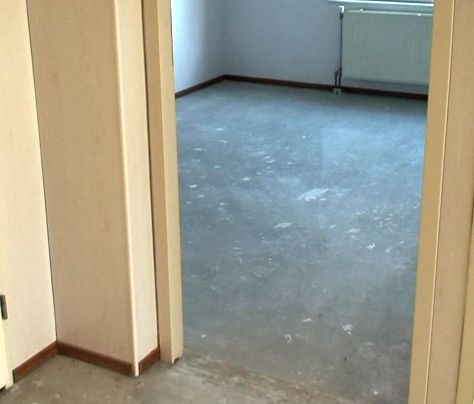
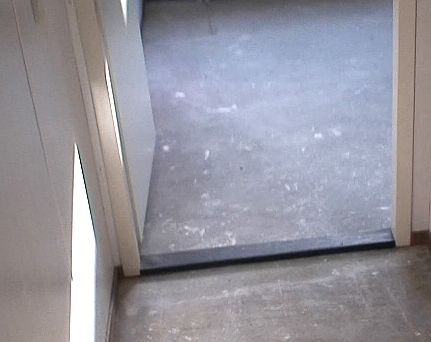
concrete built!
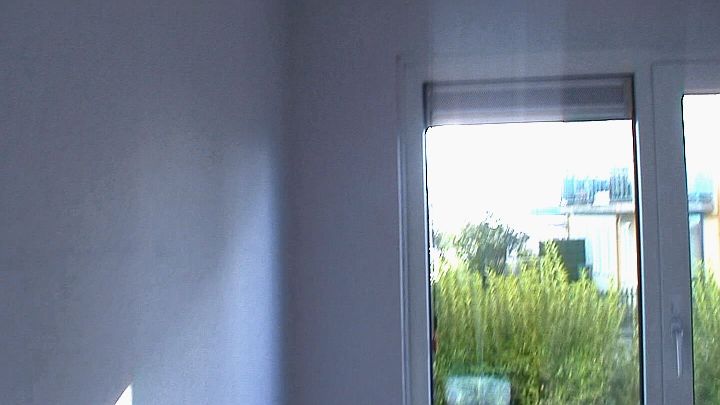
Green!

 Flickr
Flickr






































 Flickr
Flickr






